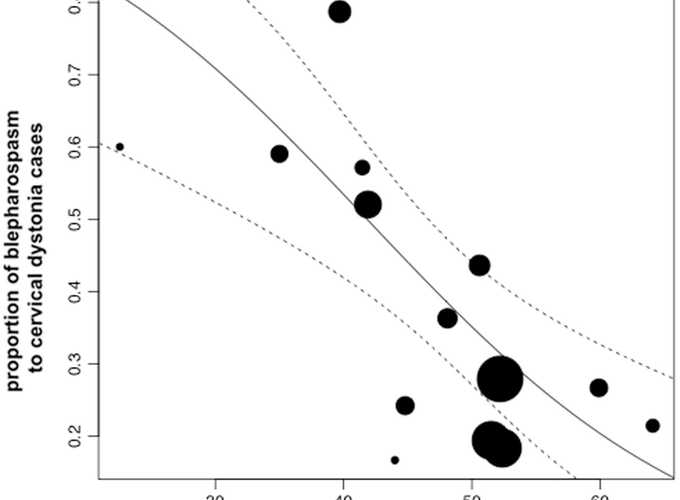Sun exposure is an environmental factor for the development of blepharospasm

Sun exposure is an environmental factor for the development of blepharospasm
Abstract
Background Adult-onset isolated focal dystonia may present with various phenotypes including blepharospasm and cervical dystonia. Although inherited in an autosomal dominant manner with a markedly reduced penetrance, environmental factors are considered important in disease penetrance and expression. We observed a marked variation by latitude in the reports of the frequency of patients with blepharospasm relative to those with cervical dystonia; we hypothesised that sun exposure is an environmental risk factor for the development of blepharospasm in genetically susceptible individuals. Methods From published clinic cohorts and epidemiological reports, the ratio of the number of cases of blepharospasm to cervical dystonia (phenotype case ratio) at each study site was analysed with regard to latitude and measures of annual insolation. Meta-regression analyses of the phenotype case ratio to these environmental factors were performed. Results The phenotype case ratio in 15 eligible study sites over 41° of latitude demonstrated a statistically significant inverse association with latitude (p=0.0004, R2=53.5%). There were significant positive associations between the phenotype case ratio and quarter-one (January–March) insolation (p=0.0005, R2=53%) and average annual insolation (p=0.003, R2=40%). Conclusion The increase in the blepharospasm: cervical dystonia case ratio with decreasing latitude and increasing insolation suggests that sunlight exposure is an environmental risk factor for the development of blepharospasm (rather than cervical dystonia) in individuals genetically susceptible to adult-onset dystonia